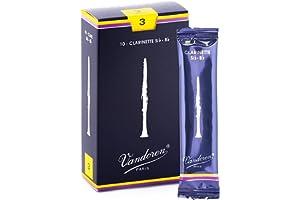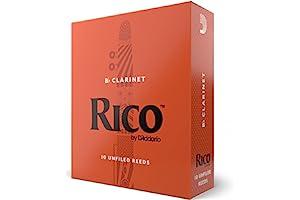Best Selling Clarinet Reeds
Clarinet reeds are an essential part of playing the clarinet. They are made from a variety of materials, including cane, synthetic materials, and plastic. The type of reed used will depend on the player's preference and the type of clarinet being played.
Links to Best Selling Clarinet Reeds
Cane Reeds
Cane reeds are the most traditional type of clarinet reed. They are made from a single piece of cane that is cut, shaped, and scraped to create the desired shape and thickness. Cane reeds are known for their warm, mellow tone and their ability to produce a wide range of dynamics.
There are two main types of cane reeds: open and closed. Open reeds have a wider tip than closed reeds, which allows for more air to flow through the reed. This results in a brighter, more projecting tone. Closed reeds have a narrower tip, which produces a darker, more focused tone.
Cane reeds are typically graded according to their hardness. The harder the reed, the more resistance it will offer to the player's breath. This can make it more difficult to play, but it will also produce a brighter, more focused tone. Softer reeds are easier to play, but they will produce a darker, more mellow tone.
When choosing a cane reed, it is important to experiment with different types and grades until you find one that feels comfortable and produces the desired sound.
Synthetic Reeds
Synthetic reeds are made from a variety of materials, including plastic, fiberglass, and nylon. They are often less expensive than cane reeds and they are less susceptible to damage from moisture and humidity. Synthetic reeds are also more durable than cane reeds, so they can last longer.
Synthetic reeds typically produce a brighter, more focused tone than cane reeds. They are also easier to play, which makes them a good option for beginners. However, some players find that synthetic reeds lack the warmth and depth of tone that cane reeds offer.
Synthetic reeds are typically graded according to their hardness, just like cane reeds. The harder the reed, the more resistance it will offer to the player's breath. This can make it more difficult to play, but it will also produce a brighter, more focused tone. Softer reeds are easier to play, but they will produce a darker, more mellow tone.
When choosing a synthetic reed, it is important to experiment with different types and grades until you find one that feels comfortable and produces the desired sound.
Plastic Reeds
Plastic reeds are made from a variety of materials, including acrylic, polycarbonate, and polyethylene. They are the most affordable type of clarinet reed and they are very durable. Plastic reeds are also very easy to play, which makes them a good option for beginners.
Plastic reeds typically produce a bright, focused tone. They are not as expressive as cane or synthetic reeds, but they can be a good option for players who are looking for a simple, affordable reed.
Plastic reeds are typically graded according to their hardness. The harder the reed, the more resistance it will offer to the player's breath. This can make it more difficult to play, but it will also produce a brighter, more focused tone. Softer reeds are easier to play, but they will produce a darker, more mellow tone.
When choosing a plastic reed, it is important to experiment with different types and grades until you find one that feels comfortable and produces the desired sound.
Choosing the Right Reed
The best way to choose the right reed for you is to experiment with different types and brands. Try different hardness levels, and see what feels comfortable and produces the sound you want. You may need to try a few different reeds before you find the perfect one.
Here are a few things to keep in mind when choosing a reed:
- The type of clarinet you are playing.
- Your playing style.
- Your budget.
With a little experimentation, you will be able to find the perfect reed for you.

